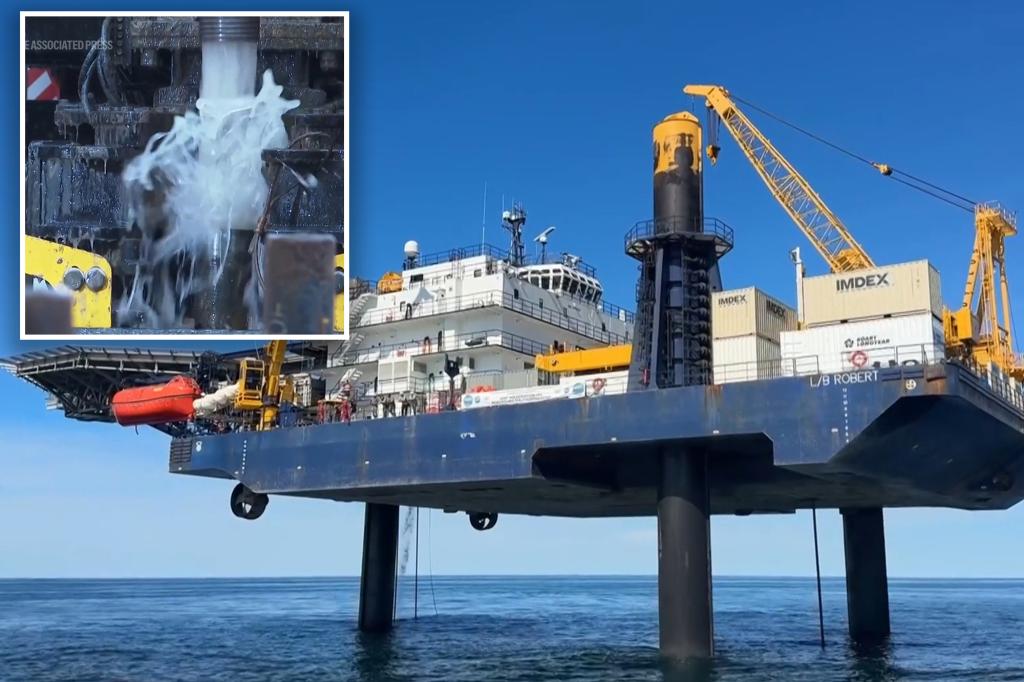Tapping into Earth’s Hidden Freshwater Treasures: The Expedition 501 Breakthrough
Nearly five decades ago, a U.S. government ship made an astonishing discovery while drilling off the northeastern United States coastline: freshwater beneath the ocean floor. This summer, in a groundbreaking scientific endeavor known as Expedition 501, researchers returned to this site to investigate what may be one of the world’s most unexpected water resources. For three months, scientists aboard the Liftboat Robert drilled into the seafloor off Cape Cod, extracting thousands of samples from what appears to be a massive hidden aquifer stretching from New Jersey to Maine. “We need to look for every possibility we have to find more water for society,” explained Brandon Dugan, the expedition’s co-chief scientist from the Colorado School of Mines. The team collected nearly 50,000 liters of water to analyze, seeking to understand its origins—whether from ancient glaciers, connected groundwater systems on land, or some combination. Their findings could revolutionize how we think about freshwater resources in a world increasingly threatened by water scarcity.
The timing of this discovery couldn’t be more critical. According to the United Nations, global demand for fresh water will exceed supplies by 40% in just five years. Climate change is causing rising sea levels that contaminate coastal freshwater sources, while data centers powering our digital world consume staggering amounts of water—each mid-sized facility using as much as 1,000 households. Water crises are emerging worldwide: Cape Town nearly ran dry in 2018, and regions across North America are experiencing groundwater shortages despite their proximity to the Great Lakes. The $25 million Expedition 501, supported by the National Science Foundation and the European Consortium for Ocean Research Drilling, brought together scientists from more than a dozen countries to explore a potential solution. Initial estimates suggested the undersea aquifer might contain enough water to supply New York City for 800 years—and the expedition’s findings hint that even this might be an underestimation, as they discovered fresh or nearly fresh water at both higher and lower depths than anticipated.
The expedition’s work built upon several earlier discoveries that pointed to this hidden water source. In 1976, two separate developments sparked interest: a U.S. Geological Survey test well on Nantucket Island found freshwater at unexpected depths, and the drilling vessel Glomar Conception discovered surprising amounts of fresh or freshened water while searching for minerals and hydrocarbons along the Continental Shelf. Then in 2015, researchers from Woods Hole Oceanographic Institution and Columbia University’s Lamont-Doherty Earth Observatory used electromagnetic technology to map what they described as a “massive offshore aquifer system” potentially rivaling America’s largest groundwater resource, the Ogallala aquifer. Expedition 501 took the crucial next step by actually drilling into the seabed and extracting water samples—making it the first global research mission specifically designed to investigate undersea freshwater resources.
The early results exceeded expectations. Soon after beginning operations on May 19, the team extracted water with just 4 parts per thousand salinity—far below the ocean’s average of 35 parts per thousand. “Four parts per thousand was a eureka moment,” Dugan said, as it suggested a connection to terrestrial water systems. As drilling continued at multiple sites 20-30 miles offshore, they eventually found water with just 1 part per thousand salt content or even less—matching the freshwater standard used in the United States. This discovery represents not just a potential water source but an entirely new environment for scientific study. Jocelyne DiRuggiero, a Johns Hopkins University biologist specializing in extreme environments, noted that while the water may contain minerals from percolating through sediments, “a similar process forms the terrestrial aquifers that we use for freshwater, and those typically have very high quality.” The next step for researchers is analyzing the thousands of samples they collected, including examining what microorganisms live in this unique environment.
Perhaps the most crucial question scientists must answer is the water’s age. Using specialized dating techniques, they’ll determine whether this aquifer contains ancient water from glacial melting thousands of years ago or if it’s being naturally replenished through ongoing connections to land-based sources. “Younger means it was a raindrop 100 years ago, 200 years ago,” Dugan explained. “If young, it’s recharging.” This distinction is vital—primordial water would be a finite resource, while newer water suggests a renewable supply that could potentially be used responsibly. The research teams will spend months analyzing their samples before meeting in Germany for collaborative work expected to produce initial findings about the water’s age and origin. Their discoveries could reshape our understanding of Earth’s water cycle and reveal new opportunities for addressing water scarcity around the world.
While the scientific potential is enormous, practical challenges remain before this water could benefit communities. Complex questions about ownership, management, extraction methods, and environmental impact must be addressed. Rob Evans, the Woods Hole geophysicist whose 2015 expedition helped pave the way for this mission, expressed both excitement and caution. He warned that tapping undersea aquifers could potentially draw water away from onshore reserves or disrupt crucial nutrient flows to marine ecosystems. “If we were to go out and start pumping these waters, there would almost certainly be unforeseen consequences,” he said. “There’s a lot of balance we would need to consider before we started diving in and drilling and exploiting these kinds of things.” Nevertheless, with freshwater becoming increasingly precious, the discovery of vast underground reservoirs beneath the ocean opens a new frontier in our search for sustainable water resources. As climate change intensifies and population grows, what was once literally “water, water, everywhere, nor any drop to drink” might transform into an unexpected lifeline for coastal communities and beyond.


